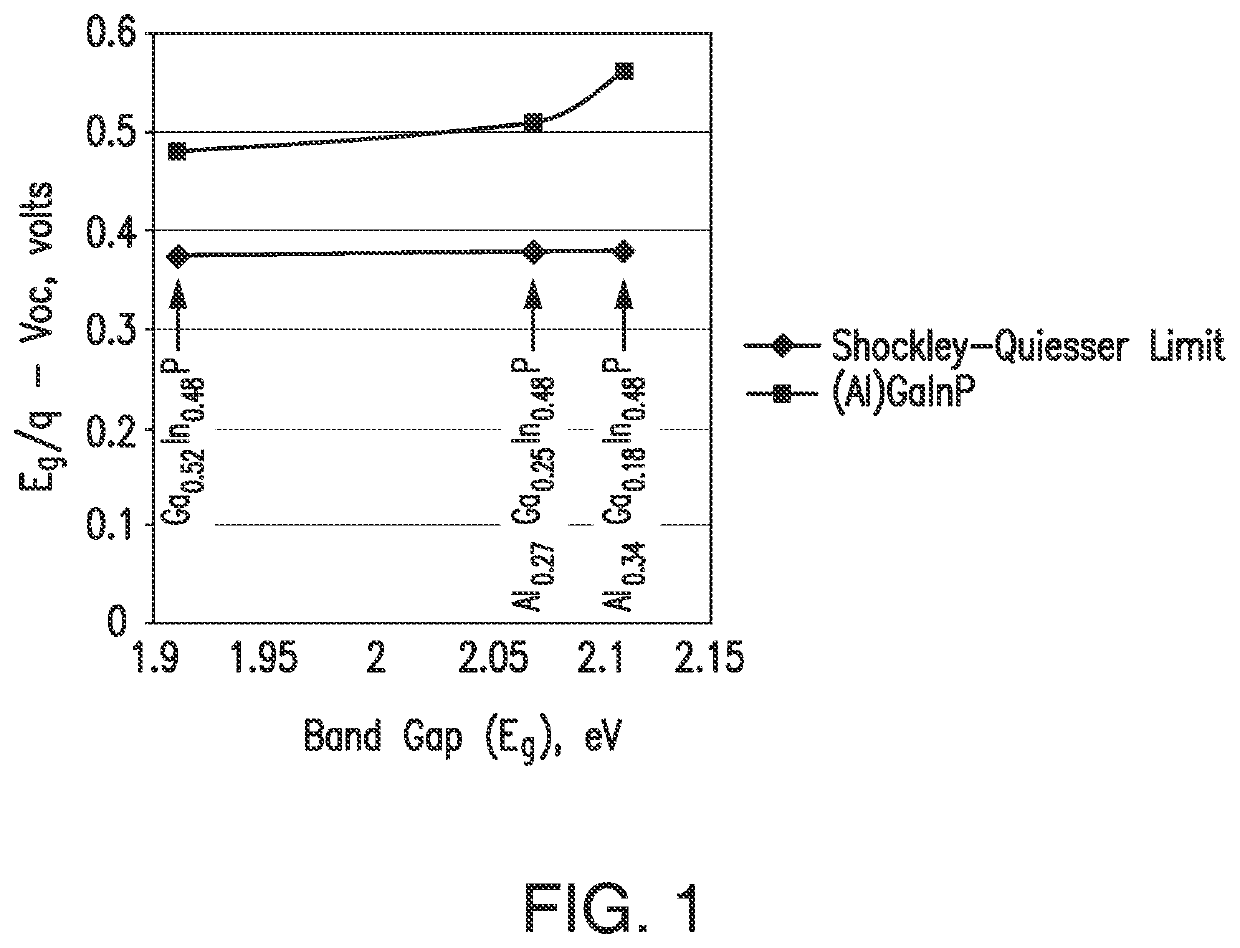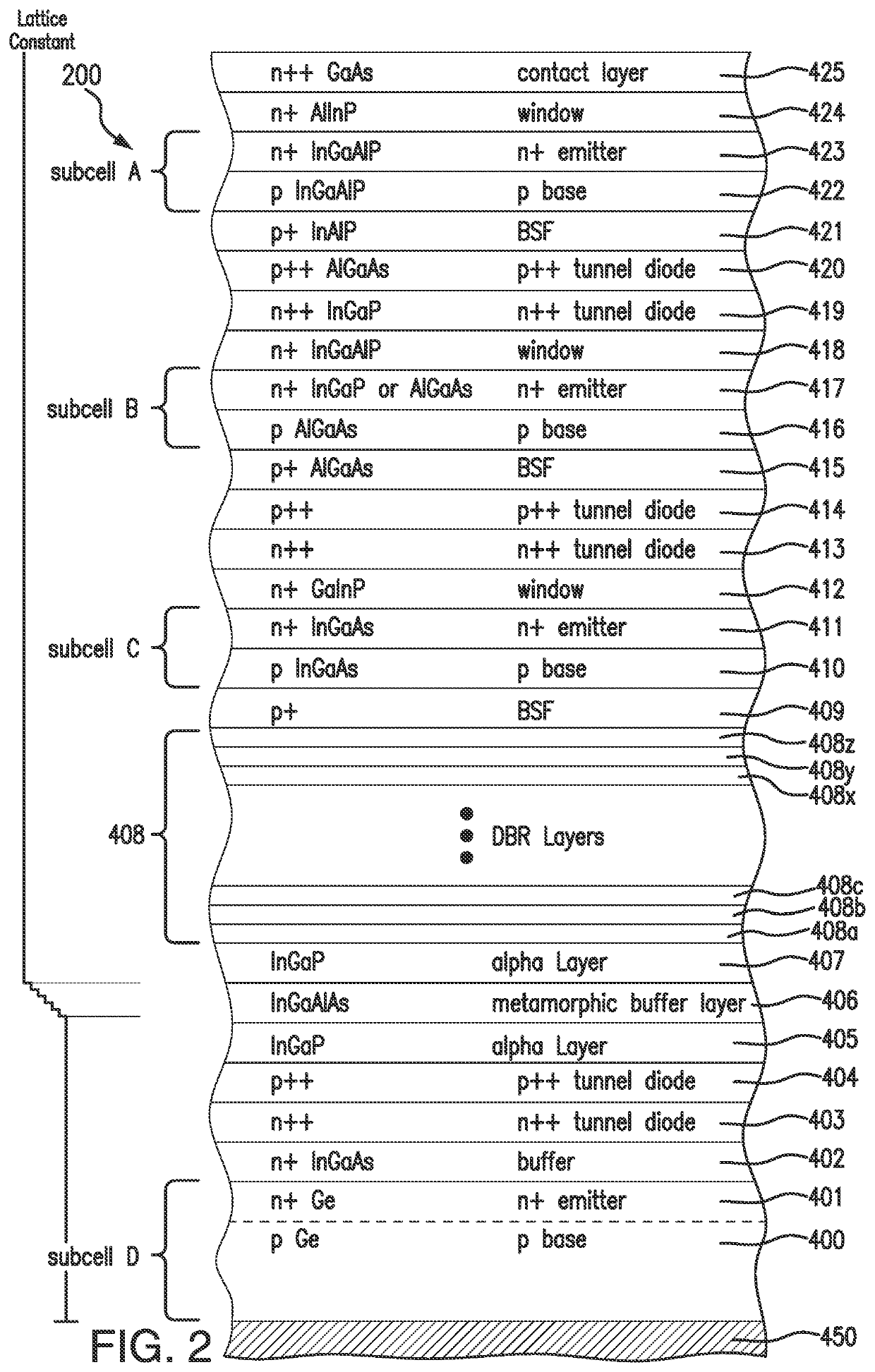Five junction multijunction metamorphic solar cell
a solar cell, multi-junction technology, applied in the direction of sustainable manufacturing/processing, climate sustainability, semiconductor devices, etc., can solve the problems of complex interdependence, complex and often unpredictable interactions, and tend to be more complex to manufacture, so as to increase the photoconversion efficiency
- Summary
- Abstract
- Description
- Claims
- Application Information
AI Technical Summary
Benefits of technology
Problems solved by technology
Method used
Image
Examples
second embodiment
[0133]FIG. 3 is a cross-sectional view of a four junction solar cell 201 after several stages of fabrication including the growth of certain semiconductor layers on the growth substrate up to the contact layer, according to the present disclosure.
[0134]The second embodiment depicted in FIG. 3 is similar to that of the first embodiment depicted in FIG. 2 except that the metamorphic buffer layer 406 is disposed before the tunnel diode layers 403, 404 are deposited.
[0135]In FIG. 3, layers 650, 601, and 602 are substantially identical to that of layers 450, 401, and 402 in FIG. 2, and layers 608a, 608b, . . . 625 are substantially identical to that of layers 408a, 408b, . . . 425 in FIG. 2, so such description will not be repeated here for brevity.
[0136]Similarly, the first alpha layer 603, the metamorphic buffer layer 604, and second alpha layer 605 are similar to that of layers 405, 406 and 407 of FIG. 2, and the tunnel diode layer 606, 607 are similar to that of layer 403, 404 of FIG...
third embodiment
[0137]FIG. 4 is a cross-sectional view of a four junction solar cell 202 after several steps of fabrication including the growth of certain semiconductor layers on the growth substrate up to the contact layer, according to the present disclosure.
[0138]The third embodiment depicted in FIG. 4 is similar to that of the first embodiment depicted in FIG. 2 except that a quantum well structure 500 is included in subcell C.
[0139]In FIG. 4, in one embodiment quantum well layers 501a through 501n are disposed between the base layer 410 and the emitter layer 411 of subcell C.
[0140]Quantum well structures in multijunction solar cells are known from U.S. patent application Ser. No. 11 / 788,315, filed Apr. 18, 2007 hereby incorporated by reference.
[0141]In some embodiments, the plurality of quantum layers are “strained balanced” by incorporating alternating lower band gap (or larger lattice constant) compressively strained InGaAs and higher band gap (or smaller lattice constant) tensionally strai...
PUM
| Property | Measurement | Unit |
|---|---|---|
| band gap | aaaaa | aaaaa |
| band gap | aaaaa | aaaaa |
| band gap | aaaaa | aaaaa |
Abstract
Description
Claims
Application Information
 Login to View More
Login to View More - R&D
- Intellectual Property
- Life Sciences
- Materials
- Tech Scout
- Unparalleled Data Quality
- Higher Quality Content
- 60% Fewer Hallucinations
Browse by: Latest US Patents, China's latest patents, Technical Efficacy Thesaurus, Application Domain, Technology Topic, Popular Technical Reports.
© 2025 PatSnap. All rights reserved.Legal|Privacy policy|Modern Slavery Act Transparency Statement|Sitemap|About US| Contact US: help@patsnap.com



